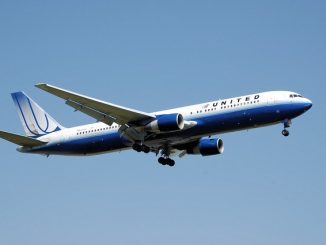
United Airlines (UAL) has announced a significant update to its in-flight internet services by partnering with SpaceX’s Starlink. According to a Reuters report, the airline will commence testing the satellite-based internet service in February, with plans to introduce it on a commercial flight using an Embraer E-175 aircraft this spring. This move marks a step towards integrating high-speed, low-latency internet across its fleet, aiming to enhance the passenger experience significantly.
The report noted that the rollout strategy involves equipping the entire two-cabin regional fleet with Starlink by the end of 2025, with the first major route serviced by a Starlink-enabled plane expected to be operational by year’s end. This approach reflects United’s commitment to upgrading connectivity, acknowledging the increasing demand for reliable internet access even at 35,000 feet.
However, there’s a notable shift in the plan regarding access to this service. Initially, United had planned to offer free Wi-Fi to all passengers, but the latest statement indicates that only members of the United MileagePlus loyalty program will enjoy complimentary access. This change might encourage more passengers to join the frequent flyer program, potentially increasing customer loyalty and engagement. For non-members, this could mean additional costs, aligning with broader trends where airlines leverage amenities to bolster membership in their loyalty programs.
The collaboration with Starlink is part of a broader initiative by United, which signed a deal last year to integrate Starlink’s services across its fleet of over 1,000 aircraft. This partnership not only positions United at the forefront of in-flight connectivity but also aligns with Starlink’s strategy to broaden its service scope beyond residential and rural internet solutions to the aviation sector.
Starlink, known for its constellation of low Earth orbit satellites, offers internet speeds and reliability that surpass traditional satellite services. This is particularly advantageous over remote areas such as oceans and polar regions, where conventional services often falter. United’s move to Starlink follows similar deals with other carriers like Hawaiian Airlines and JSX, indicating a growing trend among airlines to upgrade their in-flight internet offerings.
By choosing Starlink, United Airlines is not only aiming to provide passengers with the capability to stream video, play games, or work online seamlessly but also to enhance operational efficiency for its staff. Pilots, flight attendants, and ground crew could benefit from this connectivity, improving communication and service delivery across flights.
This strategic pivot towards advanced internet services by United reflects a broader industry trend where airlines are increasingly competing on technology and passenger experience. The decision to limit free access to MileagePlus members, however, introduces a nuanced approach to customer engagement, potentially affecting both customer satisfaction and the airline’s revenue model. As United rolls out Starlink across its fleet, the industry will watch closely to see how this impacts passenger behavior, loyalty program participation, and overall market competition in in-flight entertainment and connectivity.



Leave a Reply